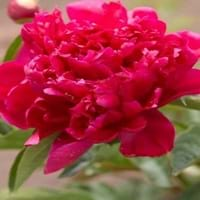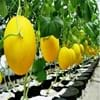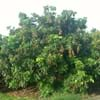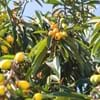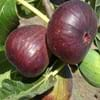Life Span
Annual or Biennial
Perennial
Origin
Africa
Hybrid origin
Types
Earlibrew, Honey King, Moonshine, Brilliance,Honey Chow
Aristocrat, Buckeye Belle, Henry Bockstoce , Abalone Pearl, Coral Supreme, Cytherea, Charlie's White
Habitat
Semi arid regions
Hillside, Woods
USDA Hardiness Zone
Not Available
Not Available
Sunset Zone
2a, 2b, 3a, 3b, 4, 5, 6, 7, 8, 9, 10, 11, 12, 13, 14, 15, 16, 17, 18, 19, 20, 21, 22, 23, 24
Not Available
Habit
Vining/Climbing
Clump-Forming
Flower Color
Yellow
Not Available
Flower Color Modifier
Bicolor
Bicolor
Fruit Color
White, Yellow, Salmon
Not Available
Leaf Color in Spring
Green
Not Available
Leaf Color in Summer
Dark Green
Not Available
Leaf Color in Fall
Dark Green
Not Available
Leaf Color in Winter
Light Green
Light Green
Leaf Shape
Heart-shaped
Compound
Plant Season
Summer, Fall
Spring, Summer
Sunlight
Full Sun
Full Sun, Partial Sun, Partial shade
Type of Soil
Loam
Clay, Loam
The pH of Soil
Neutral
Acidic, Neutral, Alkaline
Soil Drainage
Well drained
Average
Bloom Time
Indeterminate
Not Available
Tolerances
Drought
Drought
Where to Plant?
Container, Ground
Ground, Pot
How to Plant?
Seedlings
Grafting, Seedlings, Stem Planting, Transplanting
Plant Maintenance
Medium
Medium
Watering Requirements
Reduce watering once fruit are growing, Requires a lot of watering, Requires consistently moist soil
Does not require lot of watering, It cannot sustain wet-feet, Keep the ground moist but not water-logged, Needs watering once a week, Prefer drip-irrigation instead of Over-head watering, Water occasionally
In Summer
Lots of watering
Lots of watering
In Spring
Moderate
Moderate
In Winter
Average Water
Average Water
Soil pH
Neutral
Acidic, Neutral, Alkaline
Soil Type
Loam
Clay, Loam
Soil Drainage Capacity
Well drained
Average
Sun Exposure
Full Sun
Full Sun, Partial Sun, Partial shade
Pruning
Remove damaged leaves, Remove dead branches, Remove dead leaves
Do not prune during shooting season, Prune to control growth, Remove dead or diseased plant parts, Remove deadheads
Fertilizers
All-Purpose Liquid Fertilizer
All-Purpose Liquid Fertilizer
Pests and Diseases
Anthracnose, Aphids, Bacterial fruit blotch, Cucumber beetles, Downy mildew, Southern Bacterial Wilt, Spider mites
Botrytis Blight, Leaf spot, Stem spot, Viruses
Plant Tolerance
Drought
Drought
Flower Petal Number
Single
Not Available
Foliage Texture
Coarse
Not Available
Foliage Sheen
Matte
Not Available
Attracts
Not Available
Ants
Allergy
breathing problems, Cough, cramps, Diarrhea, Itchy eyes, Mouth itching, Nasal Congestion, Throat itching, wheezing
Not Available
Aesthetic Uses
Not Used For Aesthetic Purpose
Beautification, Bouquets, Showy Purposes, Used for decorating walls, fences, gates, hedges, etc.
Beauty Benefits
Not Available
Not Available
Environmental Uses
Air purification
Air purification
Medicinal Uses
Potassium, Vitamin C
Cough, Gout, Headache, Heartburn, Kidney problems, Upset stomach, Urinary tract problems
Part of Plant Used
Fruits, Leaves, Root, Seeds
Flowers, Root, Seeds
Other Uses
Added to salads, Used in tea, wine and sweet dishes, Used to flavour soups
Showy Purposes, Used as Ornamental plant, Used for fragrance
Used As Indoor Plant
No
No
Used As Outdoor Plant
Yes
Yes
Garden Design
Edible, Fruit / Fruit Tree, Herb / Vegetable, Vine
Cutflower, Feature Plant, Foundation, Mixed Border
Botanical Name
CUCUMIS melo 'Honey I Dew'
PAEONIA 'Rachel'
Common Name
Honey I Dew Honeydew, Honeydew
Intersectional Peony
In Hindi
खरबूज़ा [kharabooza]
Intersectional Peony
In German
Honigtau
Intersectional Pfingstrose
In French
Miellat
intersectionnelle Pivoine
In Spanish
Gotas de miel
interseccional Peony
In Greek
πεπόνι μελιτώματος [pepóni melitómatos]
διατομεακές Παιώνια
In Portuguese
melão de Honeydew
interseccional Peony
In Polish
melon spadzi
międzysegmentowe Piwonia
In Latin
honeydew
Intersectional AGLAOPHOTIS
Phylum
Magnoliophyta
Tracheophyta
Class
Magnoliopsida
Magnoliopsida
Order
Cucurbitales
Saxifragales
Family
Cucurbitaceae
Paeoniaceae
Clade
Not Available
Angiosperms, Core eudicots, Eudicots
Tribe
Not Available
Not Available
Subfamily
Not Available
Not Available
Number of Species
Not Available
Importance of Honeydew and Intersectional Peony
Want to have the most appropriate plant for your garden? You might want to know the importance of Honeydew and Intersectional Peony. Basically, these two plants vary in many aspects. Compare Honeydew and Intersectional Peony as they differ in many characteristics such as their life, care, benefits, facts, etc. Every gardener must at least have the slightest clue about the plants he wants to plant in his garden. Compare their benefits, which differ in many ways like facts and uses. The medicinal use of Honeydew is Potassium and Vitamin C whereas of Intersectional Peony is Cough, Gout, Headache, Heartburn, Kidney problems, Upset stomach and Urinary tract problems. Honeydew has beauty benefits as follows: Not Available while Intersectional Peony has beauty benefits as follows: Not Available.
Compare Facts of Honeydew vs Intersectional Peony
How to choose the best garden plant for your garden depending upon its facts? Here garden plant comparison will help you to solve this query. Compare the facts of Honeydew vs Intersectional Peony and know which one to choose. As garden plants have benefits and other uses, allergy is also a major drawback of plants for some people. Allergic reactions of Honeydew are breathing problems, Cough, cramps, Diarrhea, Itchy eyes, Mouth itching, Nasal Congestion, Throat itching and wheezing whereas of Intersectional Peony have Not Available respectively. Having a fruit bearing plant in your garden can be a plus point of your garden. Honeydew has showy fruits and Intersectional Peony has no showy fruits. Also Honeydew is not flowering and Intersectional Peony is flowering. You can compare Honeydew and Intersectional Peony facts and facts of other plants too.

